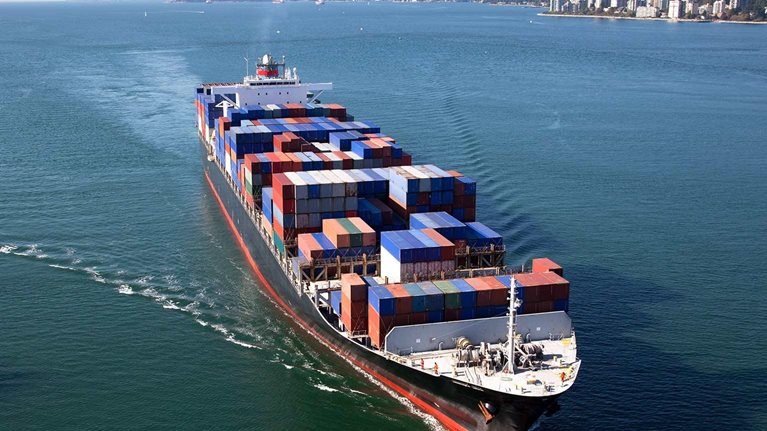Recent research from the McKinsey Global Institute analyzed the per capita GDP growth of 71 economies over 50 years. The results were striking. About one in four were “outperformers,” with real annual per capita GDP growth of 3.5 percent for the entire period; 11 of these achieved annual per capita GDP growth of at least 5.0 percent between 1995 and 2016.
Are these outperformers the secret to future global growth? What challenges will they face?
To answer these questions on emerging markets, the McKinsey Global Institute spoke with Peter Henry, the dean emeritus of New York University’s Leonard N. Stern School of Business and William R. Berkley professor of economics; Acha Leke, a senior partner at McKinsey; Anu Madgavkar, a partner at the McKinsey Global Institute; and Rakesh Mohan, senior fellow at the Jackson Institute for Global Affairs at Yale University and distinguished fellow at Brookings India. The following is a transcript of their responses.
Can emerging economies continue to drive the global economy?
Anu Madgavkar: The emerging economies led by the outperformers have certainly been very strong engines of global growth in the past, accounting for maybe two-thirds of overall global growth. We think that in the future, they certainly have the potential to continue being important engines of growth. It depends on their ability, or the ability of the economies that haven’t grown so rapidly, to raise their productivity levels to something like 4.0 percent to 4.5 percent per year. If that were to happen, the emerging economies could contribute something like $11 trillion of incremental GDP by 2030, which is like adding a whole new economy of the size of China to the global GDP.
Acha Leke: If you look at where the consumers are going to be, they’ll be predominantly in emerging economies, and actually predominantly in Africa. If you look at where the resources are today, the resources tend to also be in emerging economies. When you look at political and macroeconomic stability, which is important for growth, a lot of these economies are experiencing a lot more stability. So, I fundamentally believe that the future growth of the world will come from these emerging economies. And you know, six out of the ten fastest growing economies today are in Africa. And I expect that will continue.
Peter Henry: Services are going to be a much more important part of the path forward for emerging economies than they were in the in the past. And that’s going to mean that emerging economies are going to need to be more flexible, have stronger enabling environments, because the path will be a little bit less linear than it was for the first set of countries that industrialized. So, this is going to really require a different playbook as it were, a different set of growth strategies.
Would you like to learn more about the McKinsey Global Institute?
Rakesh Mohan: One thing to remember is that the Chinese economy is something like eight times, probably, in terms of size what it was in 1990. What was ten percent growth in terms of volume growth now is equivalent to something like 1 percent or 2 percent growth in volume terms. Even if China slows down from the last 30 years of 10 percent growth to something like 5 percent or even 4 percent growth, in terms of the volume growth, and the extra demand that it places on the rest of the world, it will be that much more important, and effective, in pulling up the whole world. India and China alone, in the next 15 years, will provide incremental demand equivalent to the demand from all of Western Europe and United States in the 1980s and 1990s. So, in that sense, the context is different, but probably more positive rather than negative.
How does the changing global context affect the outlook for emerging economies?
Acha Leke: Well, the global context is definitely changing. We can see definitely a lot more protectionism emerging, and not just in the US, by the way, around a number of countries around the world which, you know, I personally believe could actually have an impact on growth.
Anu Madgavkar: The share of south–south trade went up from about eight percent of global trade in goods to about 20 percent over the period of ten to 15 years. This really means that emerging economies have to look for new areas of focus in terms of building bridges or being parts of value chains, not just with advanced economies but also some of the larger emerging economies that are driving consumption or driving trade, such as China and India.
Peter Henry: Trade is a positive-sum game, not a zero-sum game—unless, of course, you engage in trade wars. And one of the real dangers in the short run is that we’ll see a repeat of the kind of fall we saw in global trade around the global financial crisis. My own view is that this is going to be a temporary phenomenon. I’m confident that the world will eventually return to openness, because there really is no other choice if you want sustained prosperity. But the danger is that it may take us a while to relearn that lesson.
Rakesh Mohan: It seems to me that the people who sort of posit the death of employment and manufacturing are barking up the wrong tree. The incremental demand is going to be such that if 3.5 billion people, each of them, buys one pair of shoes extra every year, or two shirts every year, or two trousers every year, that’s tremendous demand. So yes, of course, automation will make a difference. Yes, of course greater technology and manufacturing will make a difference. I’ve been to clothing factories in Bangladesh. And it’s very impressive in the use of technology compared to what they used to be. But, nonetheless, the incremental demand is going to be such that many of the emerging markets will continue to be able to grow through manufacturing and exports.

Outperformers: High-growth emerging economies and the companies that propel them
What are key opportunities and challenges for emerging economies in the years ahead?
Peter Henry: 1.2 billion people in the world still don’t have access to power and 900 million of them live in these countries whose working-age populations are growing at roughly 3 percent per year. That’s a major challenge, but it’s also an opportunity, frankly not just for emerging economies, but for advanced economies. Another challenge for emerging economies will be educating their labor forces. It’s going to be critical that their workers be more numerate and more literate than they have been in the past. Raising the level of average level of human capital will be a very important part of the growth agenda for emerging economies.
Rakesh Mohan: There are quite a few challenges, actually. First, the waning confidence of the West in the liberal economic order that they established after the Second World War. It’s possible that may be a passing phase, but we don’t know that yet. But it’s certainly the case right now. And just as there’s an increasing protectionism to do with trade, there could be increasing protectionism to do with capital flows. That has all kinds of impacts to do with macroeconomic management.
Acha Leke: Technology is interesting. We’re starting to see many of these technologies emerge, take off in some countries including in Africa. Today, we can distribute blood, but through drones. It’s happening in Rwanda already. We have solar home systems that have created a whole new set of activities where people are now entrepreneurs selling these solar home systems in the villages. I think on one hand we’re worried that technology is going to destroy some jobs, but we’re starting to see it actually create a whole new category and different sets of jobs in emerging markets.
Anu Madgavkar: Government effectiveness, based on our research, is a very key ingredient of success for the outperformer economies. What is interesting is that government effectiveness is not necessarily high to begin with. What is more important is the positive trajectory, or the movement, or the momentum, on a whole range of aspects of government effectiveness. This includes regulatory quality, or the quality of government services provided to businesses and to citizens, the rule of law, and so forth. The outperformers are at different levels of government effectiveness, but nearly all of them have shown a positive trajectory, and that is something that any emerging economy can and should do.


